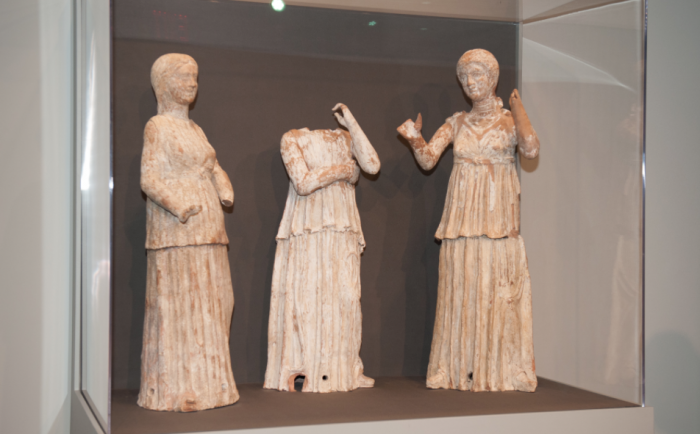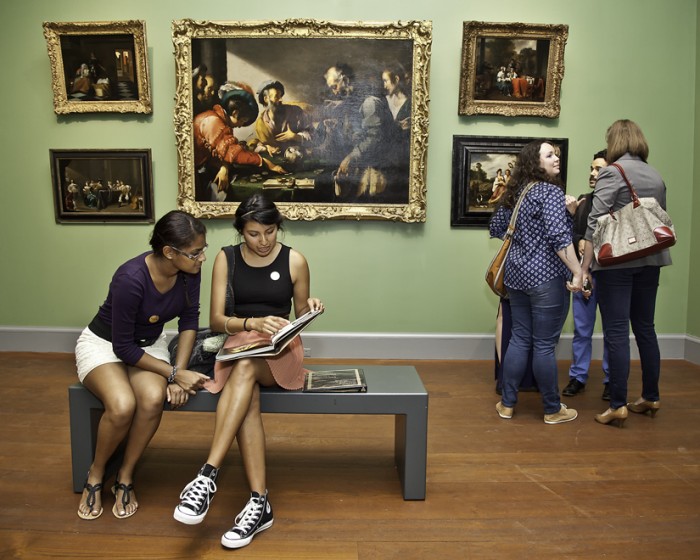
Thursday, November 21, 2013
6:30 PM-7:45 PM
Poetry returns to the Worcester Art Museum. Join two esteemed Worcester poets, Heather Treseler, Assistant professor of English at Worcester State University and Jim Cocola, Assistant Professor of Literature, Film, and Media in the Department of Humanities and Arts at WPI as they read ekphrastic poetry inspired by the Orantes: Ancient Statues from South Italy currently on display in the Jeppson Idea Lab. Mark G. Wagner, PhD from WSU and WAM Objects conservator Paula Artal-Isbrand will introduce the evening program.
Poets in the Galleries: The Worcester Art Museum has in its collection two Greek statues of the Orante type from Canosa, Magna Graecia, dating to the 3rd BCE. After a recent multi-year conservation, restoration and technical study campaign these half-life-sized statues, which have never been shown together before, will be featured in the Jeppson Idea Lab from June through December 1, 2013. In the summer of 2013, two esteemed Worcester poets — Heather Treseler and Jim Cocola were invited to reflect on and write poetry inspired by the Orante type sculptures.
Ekphrasis is an ancient Greek method of relating one medium of art to another by describing its essence and form through prose, poetry, photography, or film. In [remastered], the Museum’s recent rehanging of its Old Master collection, visitors are encouraged to create their own wall labels for some of the works on display. The Museum’s presentation of ekphrastic poetry fits in this continuum of engagement as visitors define works for themselves through their words and experience.
Heather Treseler is assistant professor of English at Worcester State University. Her poems and memoir essays have appeared in more than a dozen nationally distributed journals including Harvard Review, Iowa Review, Pleiades, Southern Poetry Review, Margie, and Notre Dame Review, and her work has been nominated for a Pushcart Prize (2011) and for the Best New Poets anthology (2013). Her chapbook, Salt, was recently a finalist for the Midwest Chapbook Prize, and she has received fellowship support from the Virginia Center for the Creative Arts and the Vermont Studio Center. In 2010-11, Treseler was a Visiting Scholar at the American Academy of Arts and Sciences. Her essays about American poetry appear in three books: Elizabeth Bishop in the 21st Century, The Salt Companion to John Matthias, and Dunstan Thompson: On the Life and Work of a Lost American Master. She is a Contributing Editor at Boulevard.
Jim Cocola works as an Assistant Professor of Literature, Film, and Media in the Department of Humanities and Arts at Worcester Polytechnic Institute, and has also served on the faculty of the Language and Thinking Program at Bard College. He earned his A.B. from the Committee on Degrees in History and Literature at Harvard College and his Ph.D. from the Department of English at the University of Virginia, and has received fellowships from The Georgia O’Keeffe Museum Research Center in Santa Fe, New Mexico and The MacDowell Colony in Peterborough, New Hampshire.
This event is a joint venture of WAM, Worcester State University, and the Worcester County Poetry Association.



